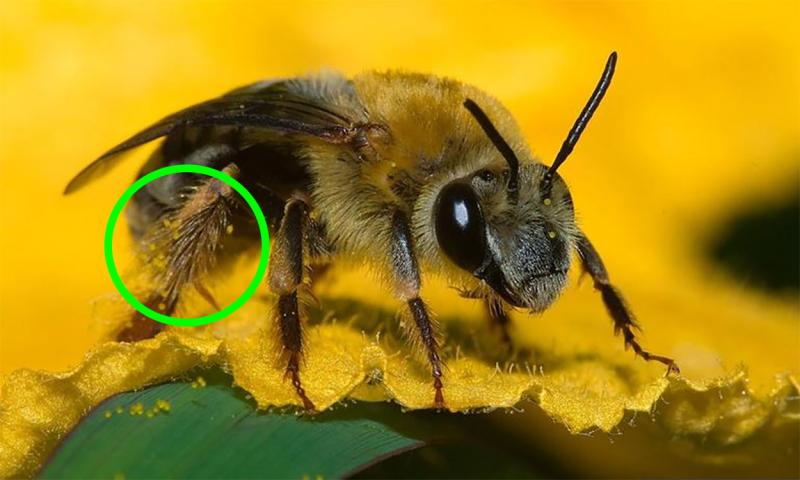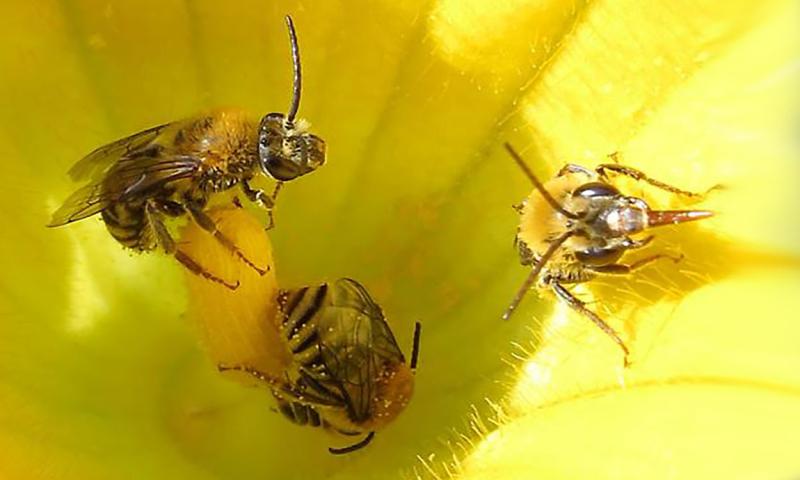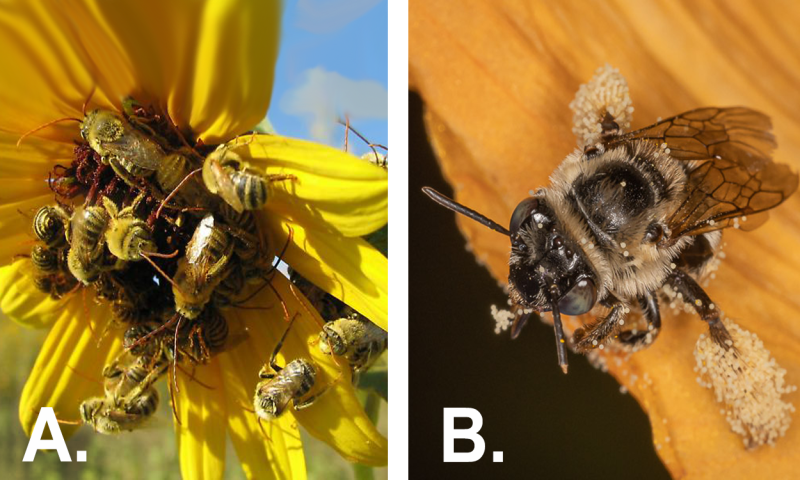
Written with contributions by Shelby Pritchard, former SDSU Extension Pest Management Specialist.
Originally Submitted: June 6, 2022
South Dakota is home to more than 400 species of native bees. They may come in all different colors and sizes, but they share one thing in common: providing essential pollination services. Approximately one out of every three bites of food consumed is possible because of a pollinator. In this article, we will highlight the squash bee and the long-horned bee, two beneficial native pollinators.
Squash Bees
(Apidae: Peponapis spp.)
Squash bees are approximately ½ of an inch in length. They are black in color, with dense yellow hairs on the thorax and hind legs, and alternating yellowish-white and black stripes on their abdomen.

Squash bees are unique in that they will only visit flowers within the cucurbit family (i.e. squashes, pumpkins, melons, cucumbers and zucchini). These highly specialized pollinators can typically be observed foraging during early morning hours and are able to collect pollen using the long comb-like hairs on their hind legs (Figure 1). They follow a diurnal flight pattern that coincides with the opening and closing of host flowers. Squash bees have one generation per year. They are solitary, but have been known to build up aggregations of nests over time in suitable habitat. Mated females tend to build their nests in bare ground close to host plants. Each nest consists of a tunnel up to 18 inches deep, with smaller branching side tunnels. The female lays one egg in each side tunnel, stocks it with pollen for the larva and closes off the tunnel. Males do not live within the nest, but can typically be found sleeping in a closed flower or crawling out of the flower as it begins to open (Figure 2).
Long-Horned Bees
(Apidae: Melissodes spp.)

Long-horned bees are medium-sized (~½ of an inch) and have bright, blue-gray to green eyes. Both males and females are covered in dense hairs and have black bodies with bands of pale, yellowish-white hairs on the abdomen. Males within the genus Melissodes have yellow faces and very long distinct antennae (Figure 3). Also, they can typically be found sleeping in groups on flowers or on plant stems using their mouthparts to hold them securely in place (Figure 4-A). Female long-horned bees are solitary and nest in the ground, usually near or under brush. Nests consist of tunnels with multiple cells or side tunnels, where the female will lay individual eggs and seal them off after provisioning them with pollen and nectar. Pollen is collected by the dense, bushy hairs located on their hind legs (Figure 4-B). Long-horned bees are most active from mid-summer to early fall and can be found in a wide variety of habitats, including gardens, wildflower prairies and sunflower fields. Many long-horned bee species are generalist pollinators, but some are considered specialists and prefer flowers within the Asteraceae family (i.e., sunflowers, daisies, asters).
Conservation

There are many ways to help conserve pollinator populations and encourage their presence. Both squash bees and long-horned bees are ground nesters, meaning it’s important to leave patches of bare soil, when possible, for them to have suitable nesting sites. Many ground nests are relatively close to the soil surface, making tilling practices a concern to the well-being of overwintering bees.
In addition to providing appropriate nesting habitat, it is important to plant a variety of plants, including known host plants, to provide a continuous season-long bloom, while also reducing the distance needed to travel for food. Even with proper habitat and forage available, pollinators are still struggling due to the use of insecticides. Always remember to read the label before using any type of chemical, avoid spraying when plants are in bloom, and only use them as a last resort.


